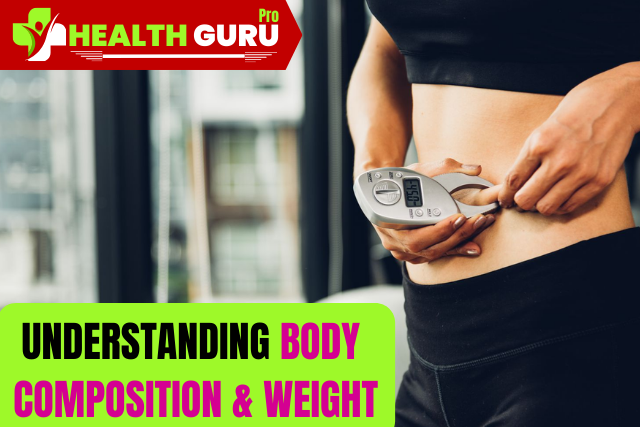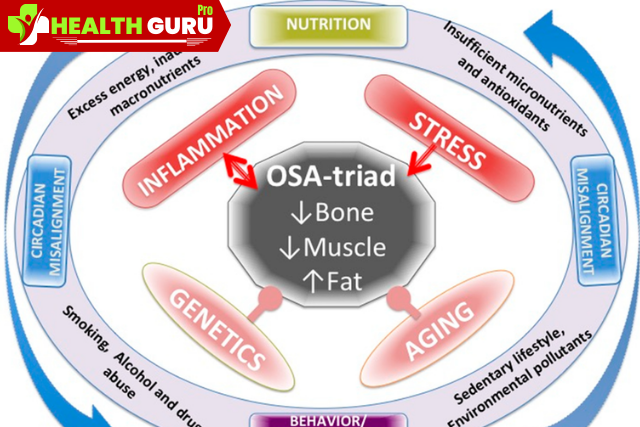Introduction:
The pursuit of health and fitness often revolves around the scales yet the numbers can be misleading. The traditional focus on weight doesn’t capture the full picture of an individual’s health and fitness. Instead understanding body composition provides a more comprehensive insight into physical health. This article explores the concepts of body composition its significance methods to measure it and practical ways to improve it.
1. What is Body Composition?
Body composition refers to the percentages of fat bone water and muscle in the human body. It is a more accurate measure of health than body weight alone because it distinguishes between the weight that comes from lean mass (muscles bones water) and fat mass.
- Fat Mass: This includes all the fat tissues in the body. Essential fat is necessary for life and reproductive functions while storage fat is excess fat that accumulates in adipose tissue.
- Lean Mass: This encompasses muscles bones water and other non-fat tissues. Muscles are crucial for movement and metabolism bones provide structure and water is vital for numerous bodily functions.
2. Why Body Composition Matters More Than Weight
While weight provides a simple measurement it doesn’t differentiate between the amounts of fat and lean mass. Two people can weigh the same but have vastly different body compositions leading to different health outcomes.
- Health Risks: High body fat percentage especially visceral fat around the organs is linked to health issues such as heart disease diabetes and certain cancers.
- Fitness Level: An individual with a higher muscle mass and lower fat percentage is generally more physically fit and metabolically healthy than someone with a higher fat percentage even if their weights are similar.
- Metabolic Health: Muscle mass influences metabolic rate. More muscle mass increases the number of calories burned at rest contributing to better weight management and overall metabolic health.
3. Methods to Measure Body Composition
Several methods can assess body composition each with varying degrees of accuracy and accessibility.
- Body Mass Index (BMI): While not a direct measure of body composition BMI uses height and weight to categorize individuals. It is useful for large-scale population studies but can be misleading on an individual level.
- Skinfold Calipers: This method measures the thickness of skinfolds at various body sites to estimate body fat percentage. It is relatively inexpensive but requires skill and consistency for accurate results.
- Bioelectrical Impedance Analysis (BIA): BIA devices send a small electrical current through the body to estimate fat-free mass and body fat percentage. It is quick and non-invasive but can be affected by hydration levels and recent physical activity.
- Dual-Energy X-ray Absorptiometry (DEXA): DEXA scans provide a detailed breakdown of bone density fat mass and lean mass. It is highly accurate but expensive and less accessible.
- Hydrostatic Weighing: This method estimates body composition based on water displacement when submerged. It is accurate but requires specialized equipment and can be uncomfortable.
- Air Displacement Plethysmography (Bod Pod): This technique measures body volume and density using air displacement. It is accurate and less invasive than hydrostatic weighing.
4. Factors Influencing Body Composition
Several factors affect body composition including genetics lifestyle and age.
- Genetics: Genetics play a significant role in determining body fat distribution muscle mass and overall body composition. However lifestyle choices can modify genetic predispositions.
- Diet: Nutrition significantly impacts body composition. A diet high in processed foods and sugars can lead to fat accumulation while a balanced diet rich in protein supports muscle maintenance and growth.
- Physical Activity: Regular exercise particularly resistance training increases muscle mass and reduces fat mass. Cardiovascular exercise also helps in burning calories and reducing fat.
- Hormones: Hormonal imbalances such as those related to thyroid function can affect metabolism and body composition. Hormones like insulin cortisol and growth hormone play crucial roles in fat storage and muscle growth.
- Age: Aging is associated with a loss of muscle mass (sarcopenia) and an increase in fat mass. Staying active and maintaining a healthy diet can mitigate these effects.
5. Improving Body Composition
Improving body composition involves strategies to increase muscle mass and decrease fat mass through a combination of diet exercise and lifestyle changes.
- Resistance Training: Lifting weights or engaging in body-weight exercises stimulates muscle growth and strength. Incorporating compound movements like squats deadlifts and bench presses targets multiple muscle groups.
- Cardiovascular Exercise: Activities such as running cycling and swimming help burn calories and improve cardiovascular health. High-Intensity Interval Training (HIIT) is particularly effective for fat loss.
- Nutrition: Consuming a balanced diet with adequate protein supports muscle repair and growth. Reducing intake of refined sugars and unhealthy fats helps in managing fat levels. Staying hydrated is also crucial for overall health and optimal body function.
- Rest and Recovery: Adequate sleep and recovery time are essential for muscle growth and overall well-being. Overtraining without sufficient rest can lead to injuries and impede progress.
- Consistency: Achieving and maintaining a healthy body composition requires consistency in exercise and dietary habits. Setting realistic goals and tracking progress can help maintain motivation and adherence.
6. Monitoring Progress and Setting Goals
Regular monitoring and setting realistic goals are essential for improving body composition. Here’s how to stay on track:
- Track Measurements: Regularly measure body fat percentage muscle mass and other relevant metrics using reliable methods. Keeping a record helps in tracking progress over time.
- Set SMART Goals: Goals should be Specific Measurable Achievable Relevant and Time-bound. For example aiming to reduce body fat by 5% in six months is a SMART goal.
- Adjust Strategies: Based on progress adjust exercise routines and dietary habits. What works initially might need tweaking as the body adapts.
- Seek Professional Guidance: Consulting fitness trainers nutritionists or healthcare providers can provide personalized advice and support ensuring safe and effective progress.

Conclusion:
Understanding body composition is crucial for a comprehensive assessment of health and fitness. Unlike weight alone body composition provides insight into the balance between fat and lean mass which is more indicative of overall health. By focusing on methods to accurately measure body composition and adopting strategies to improve it—such as balanced nutrition regular exercise and consistent monitoring—individuals can achieve a healthier and more sustainable approach to fitness. Recognizing the factors that influence body composition and making informed lifestyle choices can lead to better health outcomes increased physical performance and enhanced well-being. Prioritizing body composition over mere weight can empower individuals to make more effective and personalized health decisions.
Frequently Asked Questions (FAQs)
1. What is the ideal body fat percentage?
The ideal body fat percentage varies based on age sex and individual goals. Generally for men 6-24% is considered healthy while for women it’s 16-30%.
2. Can you lose fat and gain muscle simultaneously?
Yes with a balanced diet rich in protein and a mix of resistance and cardiovascular training it’s possible to lose fat and gain muscle simultaneously though it requires careful planning and consistency.
3. How often should I measure my body composition?
It’s recommended to measure body composition every 4-6 weeks to track progress and make necessary adjustments to your fitness and diet plans.



